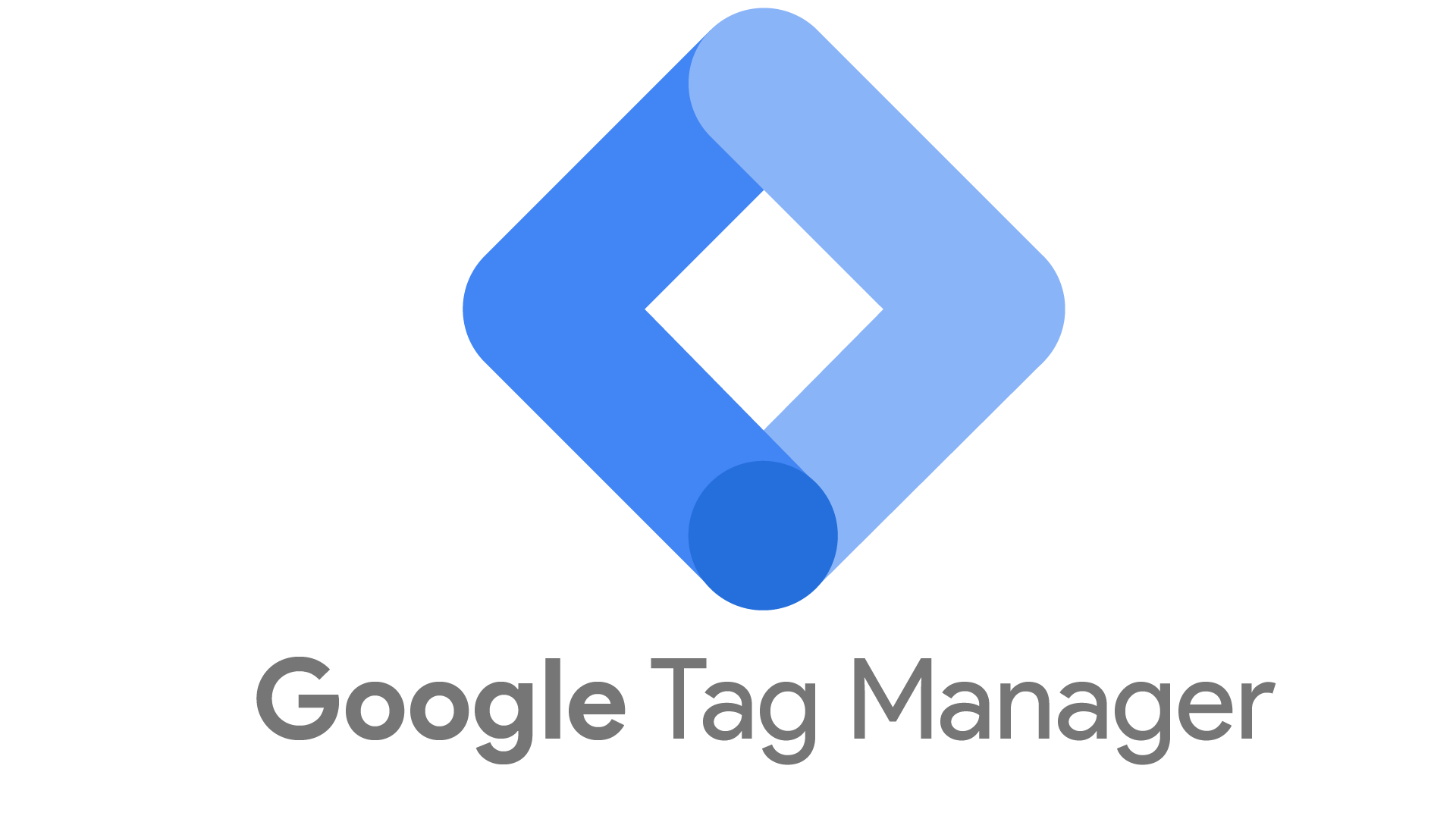
Custom Website or Template – Which Should You Choose?
By Admin - August 15, 2025
Custom Website or Template – Which Should You Choose?
In today’s expeditious digital space, your website is known as your company’s virtual address, but in reality, it is the foundation of your brand’s identity. It shapes how potential customers perceive you, how they interact with your services, and ultimately, whether they choose to trust and engage with your business.
An optimum website blends aesthetics with functionality, something that requires a careful choice at the very start of your web development and design journey.
One of the earliest, and most impactful, decisions is deciding between a custom website development approach or using a pre-designed template. This choice isn’t just about how your site looks but it influences long-term performance, maintenance, and growth potential.
Here’s what this decision will affect:
- Branding: How distinctly your business is represented
- Scalability: The ease of adapting to future needs and technologies
- Budget: Balancing initial costs with lifetime value
- User experience: Ensuring speed, accessibility, and smooth navigation
If you’re working with a website development agency, the decision will also set the tone for the project:
- Timeline: How quickly the site can go live
- Resources: The level of skill and collaboration required
- Maintenance: The complexity of updates and changes
In competitive markets such as website development in Malaysia, website development services providers often see clients caught between the quick launch and lower cost of templates, versus the tailored precision and uniqueness of custom solutions. In the sections ahead, we’ll break down each option, weigh the benefits and challenges, and give you the insights you need to choose the path that matches your brand’s vision.
Difference Between Template and Custom Design Websites
Custom Design (Built from Scratch)
A custom website development project is the purest form of digital craftsmanship. Every page, interaction, and lline of code is designed specifically for your business goals and brand identity. Nothing is recycled from a generic template. Instead, a website development agency takes the time to understand your audience, your industry, and your long-term plans before a single pixel is placed.
This approach gives you a level of creative and technical freedom that simply isn’t possible with pre-made layouts. This ensures that your website is a true reflection of your brand’s personality that is also engineered for performance, SEO, and conversion.
What Makes a Custom-Built Website Unique:
When you start from scratch, you’re not working within the limitations of an existing framework. This means:
- Brand alignment: Every color palette, font choice, and visual element is carefully matched to your identity and market positioning.
- Functionality freedom: You can request any feature, from advanced search filters to interactive product showcases, without template restrictions.
- Optimized performance: The code is purpose-built which helps the site load faster, rank better on search engines, and runs more efficiently.
- Scalable foundation: The site is built to evolve, so new sections, tools, or design elements can be added seamlessly in the future.
- Advanced integrations: Integrations like CRM systems to custom APIs are smooth and tailored to your workflow.
Advantages of Going Custom:
For businesses seeking a competitive edge, especially in saturated markets like website development Malaysia, a custom build offers:
- Complete creative control: Your site is one-of-a-kind, not just a dressed-up version of something others are already using.
- Future-ready adaptability: Design and features can be modified as your audience grows or market conditions shift.
- Brand authority: A unique design signals professionalism and attention to detail, boosting trust among visitors.
- Enhanced security: Unique code reduces the risk of common vulnerabilities found in widely used templates.
Challenges to Consider:
While the benefits are substantial, it’s worth noting that custom builds require:
- Longer development timelines: More planning, design, and testing phases.
- Higher initial investment: Premium website development services and skilled labor come at a cost.
- Clear direction and collaboration: You’ll need to work closely with your development team to achieve the desired results.
In short, a custom site is a strategic investment. For brands aiming to scale, dominate their niche, and deliver a standout user experience, the long-term return often far outweighs the upfront cost.
Template-Based Design (Themes, “Off-the-Shelf”)
A template-based design uses pre-made layouts or frameworks as the foundation of your website. These “off-the-shelf” themes are often available through platforms like WordPress, Shopify, or Wix, and can be customized to fit your brand’s content and style.
For many businesses, especially startups or those on a tight schedule, this approach is an efficient way to get a site online quickly without the heavier investment of a custom website development project.
Templates can look polished out of the box, and with the right website development services, they can be adapted to feel professional and functional. However, because they’re built for general use, they come with structural limits that may restrict your creativity and scalability in the long run.
What Defines a Template-Based Website:
By starting with an existing design framework, you get:
- Pre-designed layouts: Ready-to-use structures for common pages like home, about, services, and contact.
- Built-in features: Sliders, galleries, and forms included without additional coding.
- Theme customization options: Change colors, fonts, and images to align somewhat with your branding.
- Responsive design out of the box: Most templates are mobile-friendly from the start.
- Plugin compatibility: Access to a library of add-ons to extend functionality.
Advantages of using templates:
Many businesses, especially in cost-sensitive regions tend to choose templates for:
- Speed of deployment: Sites can be live within days or weeks.
- Lower initial cost: Budget-friendly compared to fully custom builds.
- Beginner-friendly setup: Minimal technical expertise needed with drag-and-drop tools.
- Test-and-learn flexibility: Good for proof-of-concept sites or short-term campaigns.
Challenges to be aware of:
While appealing for quick launches, templates come with trade-offs:
- Limited uniqueness: Your design may look similar to hundreds of other sites using the same theme.
- Customization constraints: Structural changes often require advanced coding, negating some of the initial cost savings.
- Performance issues – bloated code from unused features can slow down your site.
- Security risks – popular templates are frequent targets for hackers if not regularly updated.
For businesses that prioritize speed and budget over total creative control, templates offer a practical starting point. However, as your needs grow, you may eventually face the limitations of a pre-built structure and require a move toward custom solutions.
Types of Custom Website Development
When choosing custom website development, you’re not limited to one technical path. Different approaches offer varying levels of control, scalability, and speed. Your decision will depend on your project’s complexity, desired features, and the expertise of your website development agency.
Below, we break down the most common options and where each shines.
1. PHP-Based Custom Development
This is the “classic” way of building a website, writing PHP code by hand without relying heavily on frameworks or pre-made themes. It’s the go-to for projects where complete flexibility is non-negotiable.
Why Choose PHP-Based Development?
- You have full control over every aspect of the site’s architecture.
- The codebase is as clean and lightweight as you make it. It is also great for performance and SEO.
- No hidden features or unused code slowing down your site.
Best for:
- Complex back-end logic (custom CRMs, booking engines, membership portals)
- Businesses with unique workflows that can’t be handled by off-the-shelf systems
- High-security projects where code auditing is critical
Things to consider:
- Development can take longer since everything is built from scratch.
- Requires experienced PHP developers, something a strong website development services team can provide.
2. Laravel Custom Development
Laravel takes PHP to the next level by providing a modern, structured framework. Instead of coding every feature from scratch, you use Laravel’s built-in systems for routing, security, and templating, saving time while maintaining flexibility.
Why Choose Laravel Custom Development?
- Enhanced security features like CSRF protection and password hashing built in.
- Elegant syntax and tools that streamline development.
- MVC (Model-View-Controller) structure keeps code organized for scalability.
Best for:
- Web applications requiring user accounts, dashboards, and complex workflows
- Long-term projects where maintainability is key
- Businesses wanting faster development without sacrificing custom flexibility
Things to consider:
- Still requires skilled developers familiar with Laravel conventions.
- Slightly more resource-heavy than pure PHP if not optimized.
3. WordPress Custom Themes
With over 40% of the web powered by WordPress, creating a fully custom theme within its ecosystem offers both flexibility and familiarity. Designers often start in tools like Figma or Sketch, then developers translate the mockups into a unique WordPress theme.
Why Choose WordPress Custom Themes?
- Complete creative control over layout and styling.
- Easy for clients to update content without touching code.
- Huge plugin ecosystem for extending functionality.
Best for:
- Content-heavy sites like blogs, corporate pages, and small e-commerce stores
- Brands that want a custom look but still use WordPress’s familiar interface
- Projects needing SEO-friendly, mobile-responsive design
Things to consider:
- Requires careful coding to avoid “theme bloat.”
- Security depends on plugin selection and regular updates.
4. Child Themes & Page Builders
A child theme builds on top of an existing WordPress theme, allowing customization without touching the core theme files. Combine this with visual page builders like Elementor, Divi, or Gutenberg blocks, and you can achieve a middle-ground between speed and flexibility.
Why Choose Child Themes & Page Builders?
- Faster than building from scratch, since you’re modifying an existing base.
- Lower development costs while still allowing design customization.
- Page builders make updates and tweaks accessible to non-technical users.
Best for:
- Small to mid-sized businesses wanting a fresh look on a budget
- Projects with tight deadlines but still requiring brand customization
- Landing pages and marketing campaign sites
Things to consider:
- Too many plugins or builder elements can slow down your site.
- Not as flexible as a true custom theme, some design limitations remain.
5. Full Framework Platforms (React, Vue, Django, etc.)
For projects that demand high interactivity, real-time updates, or single-page application (SPA) capabilities, front-end frameworks like React or Vue—or full-stack solutions like Django, are the way to go. These are popular for building complex, app-like experiences outside the traditional WordPress ecosystem.
Why Choose Full Framework Platforms?
- Lightning-fast user interfaces thanks to dynamic rendering.
- Ideal for interactive dashboards, social platforms, and custom web apps.
- Highly scalable for future features and expansions.
Best for:
- SaaS products, marketplaces, and data-heavy platforms
- Businesses needing a unique experience that can’t be achieved with a CMS
- Long-term projects where modern development practices are essential
Things to consider:
- Requires specialized developers, costs can be higher.
- More complex hosting and deployment compared to WordPress-based solutions.
Use-Case Scenarios: What Works Best When?
Choosing between custom website development and template-based design isn’t just about personal preference, it’s about aligning your decision with your business goals, resources, and timeline. Each approach has strengths that shine in certain situations, and knowing when to use which can save you both time and money while maximizing long-term ROI.
1. Small Budget & Quick Launch
Example: MVP (Minimum Viable Product), temporary campaign site, or early-stage startup needing fast online visibility.
When time and budget are limited, speed and simplicity take priority. In this case, a template-based design or a child theme approach can get your website live in days or weeks. By leveraging an existing layout and adapting it to your brand’s colors, content, and imagery, you minimize development work while still presenting a professional online presence.
Best options in this category:
- Off-the-shelf templates from trusted marketplaces or CMS platforms
- Child themes built on reputable parent themes for a balance of customization and speed
Pros:
- Significantly lower upfront costs compared to fully custom builds
- Fast deployment, ideal for testing market demand or launching an MVP
- Built-in features like sliders (e.g., Slider Revolution) and responsive design without extra coding
Cons:
- Your site may look similar to others using the same theme
- Over-customization can slow down performance or require developer help later
2. Growing Brand with Unique Needs
Example: E-commerce business with advanced filtering, subscription services, or complex workflows.
For brands ready to expand their capabilities and stand out visually, investing in custom website development is the logical step. Frameworks like Laravel offer robust back-end power for complex applications, while custom WordPress themes combine a unique front-end with WordPress’s content management ease.
Best options in this category:
- Laravel for advanced back-end functionality and scalability
- Custom WordPress theme designed from scratch for your brand identity
Pros:
- Unique design that reflects your brand’s personality and market positioning
- Flexible architecture that can evolve with your business
- Improved SEO and performance through optimized code and tailored structure
Cons:
- Longer development timelines means more planning, coding, and testing
- Higher initial investment, but with long-term benefits in scalability and brand authority
3. The Middle Ground
Example: Small to mid-sized business that wants more flexibility than a template but without the full cost of a custom build.
If you need a unique look and additional functionality but still want to keep development time and budget manageable, hybrid solutions work best. For instance, pairing WordPress with a lightweight starter theme like Hello Theme and using a page builder like Elementor allows you to craft custom layouts without writing every line of code from scratch.
Best options in this category:
- WordPress + Hello Theme + Elementor for design freedom and easier content updates
- Minimal coding with the ability to add custom elements when needed
Pros:
- Faster development than a fully custom-coded project
- Lower cost while still achieving a tailored design
- Drag-and-drop editing for non-technical team members
Cons:
- Performance optimization is essential — too many builder elements can slow your site
- Still not as scalable as a fully custom framework-based build
5 Common Mistakes When Choosing Between Custom and Template
Selecting the right approach for your website is as much about avoiding pitfalls as it is about choosing features. Businesses often rush into a decision without fully weighing the technical, financial, and long-term implications. These mistakes can lead to wasted resources, underperforming websites, and expensive redesigns down the line.
Below are the most frequent missteps we’ve seen in web development and design, along with the consequences they bring.
1. Overestimating Technical Skills
The Issue:
Many business owners choose custom website development thinking they can maintain or update it themselves. While custom code offers flexibility, it also demands technical know-how to troubleshoot, add new features, and optimize performance.
The Consequence:
- Without proper skills, even small updates can become costly if you need to rehire a website development agency.
- Mismanaged code can cause broken pages, security issues, and lost SEO rankings.
2. Ignoring Long-Term Costs
The Issue:
Opting for the cheapest upfront option, often a pre-made template can seem budget-friendly. But as your needs grow, customization and plugin licensing fees can add up, sometimes exceeding the cost of a custom build.
The Consequence:
- “Cheap now” can lead to “expensive later” if the platform can’t adapt.
- Templates may require a complete rebuild when your business outgrows them, doubling your investment.
3. Not Planning for Scalability
The Issue:
Choosing a theme or platform without considering future needs can lead to limitations in functionality, performance, and integrations.
The Consequence:
- In markets like Malaysia, growing brands often need new features such as advanced booking systems or multi-language support—that some templates can’t handle.
- A lack of scalability means more downtime and redevelopment when upgrades are needed.
4. Focusing Only on Looks
The Issue:
Many business owners choose designs purely for visual appeal without evaluating speed, SEO-readiness, or security features.
The Consequence:
- A visually stunning site that loads slowly or ranks poorly will underperform in search engines.
- Neglecting security can expose your business and customers to cyber threats.
5. Skipping User Testing
The Issue:
Launching without testing the site’s usability with real visitors leads to poor navigation, unclear calls-to-action, and missed conversions.
The Consequence:
- User testing reveals how people actually interact with your site, not how you think they will.
- Even small fixes (e.g., button placement or menu structure) can dramatically improve conversion rates.
SEO Impact: Which Option Gives You an Edge?
Search engine optimization (SEO) is a core factor in how well your website attracts organic traffic and ranks against competitors. The approach you take in web development and design can directly influence performance in search results, from page speed to structured data.
Here’s how templates and custom builds compare from an SEO standpoint, and what you should consider before launch.
1.Template SEO Limits
The Issue:
Many pre-built templates are designed for visual appeal first, performance second. They often include unused scripts, redundant CSS, and heavy image assets that can slow load times.
The Consequence:
- Slower pages can negatively impact Google rankings.
- Extra code can make it harder for search engines to crawl and index your content efficiently.
- You may need a developer to strip out unnecessary elements to reach optimal performance.
2. Custom SEO Advantages
The Benefits:
With custom website development, you have control over the structure, code quality, and loading behavior of your site from the ground up. This means you can build specifically for SEO performance.
The Advantage:
- Cleaner code with no unused elements to slow down crawlers.
- Easier integration of structured schema markup for rich snippets.
- Optimized asset delivery for better load speed and user experience.
3. Core Web Vitals
The Consequence:
Google’s Core Web Vitals known as the Largest Contentful Paint (LCP), First Input Delay (FID), and Cumulative Layout Shift (CLS), are now part of ranking factors.
- Templates may need extra optimization to score well, especially if they rely heavily on animations or bulky plugins.
- Custom builds can be designed to meet these metrics from the start, giving you a competitive edge in organic rankings.
4. Best Practices for Any Build
Regardless of whether you choose a template or custom design, following these steps before launch will help ensure SEO readiness:
- Mobile-first design: Make sure your layout adapts perfectly to all screen sizes.
- Fast-loading pages: Compress images, minimize code, and use caching.
- Clean URL structure: Short, descriptive URLs improve crawlability and user trust.
- On-page optimization: Meta titles, descriptions, header tags, and keyword placement.
- XML sitemap & robots.txt: Guide search engines to your important pages.
- SSL certificate: HTTPS is a trust and ranking signal.
FAQs
1. What is the difference between a custom website and a template?
A custom website is built from scratch to match your exact brand, design, and functionality needs, while a template is a pre-made layout that you adapt to your content. Custom builds give you more flexibility, better scalability, and cleaner code, while templates are faster and cheaper to launch.
2. Which is better for SEO, a custom site or a template?
Custom websites usually have an SEO edge because they can be coded cleanly, load faster, and be structured for search engines from day one. Templates can rank well too, but often need extra optimization to remove bloated code and improve performance.
3. How much does custom website development cost?
The price varies depending on the complexity, features, and your website development agency. A basic custom site might start at a few thousand dollars, while advanced platforms with complex integrations can cost significantly more.
4. Can a template website look unique?
Yes, with enough customization. You can change colors, fonts, layouts, and images to make it align with your brand. However, because other businesses may use the same theme, the uniqueness is limited compared to a fully custom design.
5. Is custom website development worth the investment?
If you need long-term scalability, strong branding, and advanced features, yes—it’s worth it. A well-built custom site can perform better, adapt to future needs, and give you a competitive advantage in your market.
6. How fast can a website be launched with a template?
Template-based websites can often be launched in days or weeks, depending on how much customization is needed and how quickly content is ready. That’s why they’re popular for MVPs, campaigns, or businesses on tight deadlines.
7. What is Laravel, and why use it for web development?
Laravel is a modern PHP framework that makes custom website development faster and more secure. It includes built-in tools for routing, templating, and security, making it ideal for complex applications and scalable projects.
8. Can I switch from a template to a custom site later?
Yes, but it often means a complete rebuild. If you start with a template, it’s wise to choose one that can handle your short-term needs while planning for a custom build when your business grows.
9. How do I choose the right website development agency?
Look for an agency with a strong portfolio, relevant experience in your industry, transparent pricing, and good communication. If possible, choose one that offers both custom website development and website development services for templates so you can explore both paths.
10. What should I check before launching my website for SEO?
Make sure it’s mobile-friendly, loads quickly, has clean URLs, proper meta tags, an XML sitemap, and an SSL certificate. Also, test it against Google’s Core Web Vitals for performance and user experience.
References
AvyaTech. (n.d.). 14 advantages of selecting Laravel for eCommerce development. Retrieved from https://www.avyatech.com/blog/why-choose-laravel-for-ecommerce-development/
ByteTechnoLab. (n.d.). Benefits of web development with Laravel framework. Retrieved from https://www.bytestechnolab.com/blog/benefits-of-web-development-with-laravel-framework
Consumer-Sketch. (n.d.). WordPress vs Laravel: Which one wins in SEO? Retrieved from https://www.consumer-sketch.com/blog/wordpress-vs-laravel-seo
CustomWebForge. (2025). Benefits of choosing Laravel for your next web project. Retrieved from https://www.customwebforge.com/blog/category/web-development/benefits-of-choosing-laravel-for-your-next-web-project
DesignRush. (n.d.). Laravel vs. WordPress: Which one is right for your business? Retrieved from https://www.designrush.com/agency/website-design-development/trends/wordpress-vs-laravel
Hines, K. (2023, December 6). Are Core Web Vitals a ranking factor? Search Engine Journal. Retrieved from https://www.searchenginejournal.com/ranking-factors/core-web-vitals/
LSEO.com. (n.d.). Custom web design vs. website templates: Which is right for you? Retrieved from https://www.lseo.com/
News.com.au. (2025). Tradie pays $20k for website, gets zero sales. Retrieved from https://www.news.com.au/finance/small-business/its-ridiculous-tradie-pays-20000-to-seo-firm-website-gets-four-views-per-month-and-zero-sales/news-story/a5cd2fe2bd762fa62712984d9f293f46
Pisu, L., Maiorca, D., & Giacinto, G. (2024). A survey of the overlooked dangers of template engines. arXiv. https://arxiv.org/abs/2405.01118
Reddit user. (2019). WordPress page builder(s). Retrieved from https://www.reddit.com/r/Wordpress/comments/e23zti/
Reddit user. (2021). Web core vitals — important or not? Retrieved from https://www.reddit.com/r/SEO/comments/oburqk/
Reddit user. (2023). Laravel PHP services: Top 10 reasons why you should opt for it. Retrieved from https://www.reddit.com/r/webdevelopment/comments/u431ex/
Reddit user. (2023, April 25). Elementor — bad for SEO? Retrieved from https://www.reddit.com/r/DigitalMarketing/comments/12yj9dd/
Reddit user. (2023, August 3). Is it a bad SEO practice to use a single template for page content with values or keywords changing based on different pages? Retrieved from https://www.reddit.com/r/SEO/comments/15h0l67/
Reddit user. (2023, December 18). Why I don't use Elementor: Is it bad for SEO? Retrieved from https://www.reddit.com/r/SiteWays/comments/18ln1sk/
Reddit user. (2023, November 6). Should I use Elementor page builder on my website? Retrieved from https://www.reddit.com/r/Wordpress/comments/17ozqba/
Reddit user. (2025, January 6). Google’s team let slip that CWV (site speed) just isn’t that important. Retrieved from https://www.reddit.com/r/SEO/comments/1hvb2jy/
RockContent. (n.d.). Core Web Vitals: How to improve for the next Google ranking factors. Retrieved from https://rockcontent.com/blog/core-web-vitals/
Search Engine Journal. (n.d.). Website templates vs. custom design: Which is best for SEO? Retrieved from https://www.searchenginejournal.com/
Similarweb. (n.d.). Core Web Vitals for SEO: How to improve them. Retrieved from https://www.similarweb.com/blog/marketing/seo/core-web-vitals/
Slider Revolution. (n.d.). Create stunning websites with Slider Revolution. Retrieved from https://www.sliderrevolution.com/
TechRadar. (2025, August). Wix website builder review 2025. Retrieved from https://www.techradar.com/reviews/wix
TechRadar. (2025, August 6). Best alternatives to Wix of 2025. Retrieved from https://www.techradar.com/best/alternatives-to-wix
TechRadar. (2025, August 11). Best on-page SEO tool of 2025. Retrieved from https://www.techradar.com/best/onpage-seo-tools
TechRadar. (2025, August 11). How much does it cost to build a website? Retrieved from https://www.techradar.com/news/how-much-does-it-cost-to-build-a-website
TechRadar. (2025). Best SEO tool of 2025. Retrieved from https://www.techradar.com/news/best-seo-tool
TechRadar. (2025). The 10 most popular website templates according to Squarespace. Retrieved from https://www.techradar.com/pro/website-building/the-10-most-popular-website-templates-according-to-squarespace
The White Label Agency. (n.d.). Custom WordPress themes vs. templates. Retrieved from https://thewhitelabelagency.com/
Viha Digital Commerce Private Limited. (n.d.). Advantages of custom web development for businesses. Retrieved from https://www.vihadigitalcommerce.com/
WebBoost. (2024). Core Web Vitals: The hidden Google ranking factor that’s costing you 47% of your traffic. Retrieved from https://webboost.dev/articles/core-web-vitals-the-hidden-google-ranking-factor-thats-costing-you-47-of-your-traffic/
ZeeClick. (2025). Advantages of using Laravel for custom web apps. Retrieved from https://www.zeeclick.com/what-makes-laravel-developers-the-ideal-choice-for-custom-web-applications/





